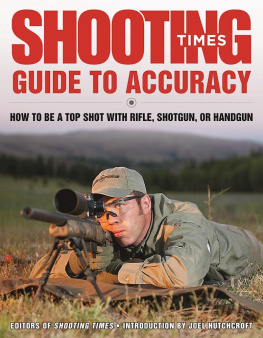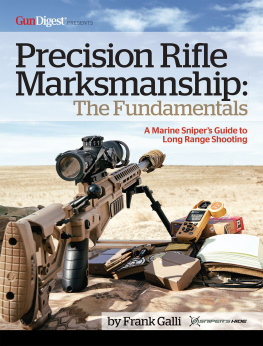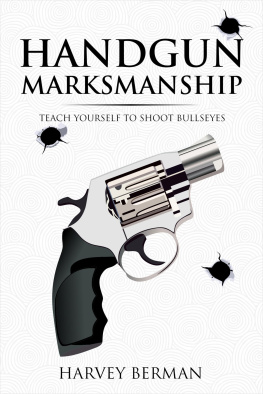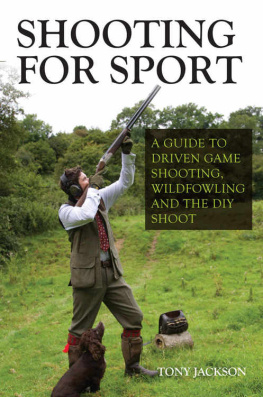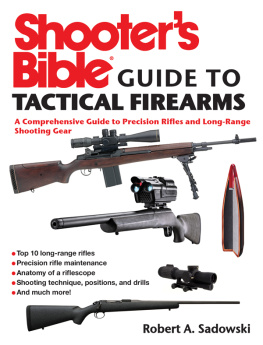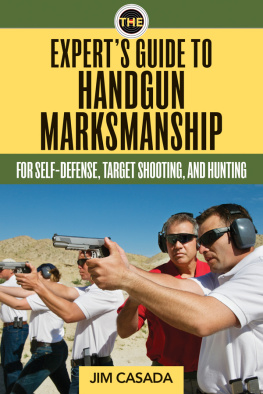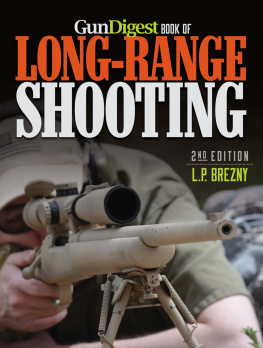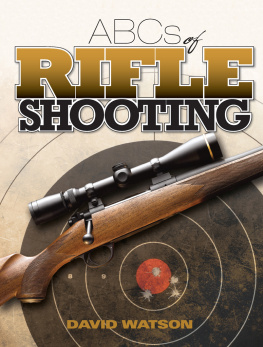Copyright 2017 by Outdoor Sportsman Group
All rights reserved. No part of this book may be reproduced in any manner without the express written consent of the publisher, except in the case of brief excerpts in critical reviews or articles. All inquiries should be addressed to Skyhorse Publishing, 307 West 36th Street, 11th Floor, New York, NY 10018.
Skyhorse Publishing books may be purchased in bulk at special discounts for sales promotion, corporate gifts, fund-raising, or educational purposes. Special editions can also be created to specifications. For details, contact the Special Sales Department, Skyhorse Publishing, 307 West 36th Street, 11th Floor, New York, NY 10018 or .
Skyhorse and Skyhorse Publishing are registered trademarks of Skyhorse Publishing, Inc., a Delaware corporation.
Visit our website at www.skyhorsepublishing.com.
10 9 8 7 6 5 4 3 2 1
Library of Congress Cataloging-in-Publication Data is available on file.
Cover design by Tom Lau
Print ISBN: 978-1-5107-2077-0
Ebook ISBN: 978-1-5107-2080-0
Printed in China
TABLE OF CONTENTS
INTRODUCTION
The ability to strike a target with the utmost accuracy has been the objective of shooters ever since firearms were invented. During hunting, competitive shooting, informal plinking, or life-and-death situations, serious shooters have sought to shoot as accurately as they possibly can. The key, of course, is to become a better-skilled marksman. Equipment is important, too. Understanding what makes a firearmlets say a centerfire bolt-action sniper riflemore accurate is one step in the quest to be a better marksman. The same applies to handguns, shotguns, rimfire firearms, and even airguns. The Shooting Times Guide to Accuracy: How to Be a Top Shot with Rifle, Shotgun, or Handgun aims to help readers understand all these aspects and more.
Contained within these pages is the compilation of more than twenty articles that have been published in Shooting Times magazine and its special editions. These articles were specifically chosen because they target what we think is the most important information a shooter needs to know to better understand the art of accuracy. We believe that reading themand applying their wisdomwill help you become a better shooter.
Some of the articles are equipment-specific, such as Layne Simpsons piece on what makes aftermarket rifle barrels accurate, Richard Manns article on the most important part of a rifle, and Reid Coffields step-by-step procedure for lapping an old rifles barrel to improve its accuracy potential. Other chapters focus on shooting technique, such as Manns commonsense approach to better marksmanship, Jeff Hoffmans report on how to master the invisible influence that wind has on accuracy, and J. Guthries treatise on scope techniques for long-range shooting.
In addition, Greg Rodriguez explains why tactical rifles are so accurate, and David Fortier tells you all about long-range military accuracy. Charles Petty demonstrates how a new barrel can improve your Model 1911 pistols accuracy, and Tom Gaylord details how shooting airguns can improve your shooting skills. Also, Rodriguez and Terry Wieland offer shotgun shooting tips, Simpson provides his tips to improving muzzleloader accuracy, and Fortier shows you how to master the positions of NRA High Power competition.
All chapters were written by expert shooters and hunters who also are the most respected writers in the shooting industry with decades of experience to back up their opinions.
All in all, if you have an interest in the skills and equipment necessary to shoot one-hole groups, this book is for you.
Joel J. Hutchcroft
Editor in Chief, Shooting Times
PART I
TIPS FOR ACCURACY


S hortly after the first bullet was propelled toward a target by gunpowder, it is a near certainty the man behind the trigger was thinking of ways to make future shots more accurate. The quest to precisely place bullets at long range has absolutely consumed rifle builders and shooters. Whether the plans were penned with a quill and shaped with a file or drawn up with zeros and ones and executed by a robot, proficiency and accuracy are what define riflemen and rifles. Time has not changed that fact, but technology has made the end result more attainable.
There is not much in the way of hard data to confirm my suspicions of an increase in the number of guys offering up custom work and precision rifles, but it seems, even with my limited perspective in terms of years behind the trigger, that every day someone else hangs out his shingle and declares his rifles the best. With such a proliferation of custom houses, a whole new language has emergedtrued, blueprinted, coated, lapped, and beddedand we are all quick to toss around the terms. But what do they really mean and is everyone comparing apples to apples? What goes into making a precision rifle?
I was fortunate to meet a gentleman a few years ago that struck me as just the guy to explain the process in detail. Jered Joplin at American Precision Arms has quietly built a stellar reputation for accurate rifles over the past 10 years. Collectively, the guys in his small shop have 45 years of riflemaking experience. APA makes a small line of aftermarket parts and builds everything from benchrest rifles to hunting rifles to rifles for SWAT teams. They handle every step of the process except machining the action from bar stock and putting rifling in the barrel. I liked Joplins approach, especially after suffering through diatribes from numerous blowhards that proclaim their way is the only way and their rifles are the best, period. Joplin was quick to say there are plenty of great riflemakers, and his processes are time and range proven but certainly not the only way to get the job done.
I spent a day last fall at Joplins Jefferson, Georgia, shop and looked at all the different tools and techniques that go into building a precision rifle. Joplin first explained that while there are all kinds of rifles, heavy and light, large caliber and small, the principles that go into building an accurate rifle are pretty much the same. APAs craftsmen start with the action.

Every surface of a trued bolt and receiver will be parallel or perpendicular to the receivers centerline.
The Action
All actions are not created equal since rack-grade units could never hope to equal the precision or consistency of a custom action from companies such as Nesika or BAT Machine. They also do not cost more than a grand.
Regardless of where it comes from, each action gets a thorough inspection by APAs craftsmen, who carefully measure critical dimensions. The process is commonly called truing or blueprinting. Blueprinting, in its truest form, would involve matching every critical measurement to a set of drawings, which no one does. Truing simply assures that all the angles are square or perpendicular to one another and other parts are perfectly concentric. While used interchangeably, the two terms really mean different things.

